Azure for AWS professionals - Auto Scaling - AWS - 02 Creating Launch Configurations
@20aman Aug 05, 2019Note that this post is a part of the series. You can view all posts in this series here: Azure for AWS professionals - Index
Launch Configuration is the configuration information about how to create an EC2 instance. It has all the relevant information to launch a new EC2 instance. It also contains other instance-level settings, such as the Amazon Machine Image (AMI), instance type, key pair, and security groups, etc. This helps you to provide a predictable and repeatable way of deploying multiple EC2 instances in your environment.
Please note that these provide similar functionality as Launch Templates (which we will check in the next blog). This is the older way of doing things. You can have multiple versions of a launch template but not for a launch configuration. Any new features are being added to the Launch Templates and that is what AWS recommends to use.
This (or Launch Template) is also required for creating Auto Scaling Groups in AWS.
You start by navigating to EC2 in AWS and then clicking on Launch Configurations under "Auto Scaling" category as shown below. Click on "Create launch configuration" to launch the wizard.
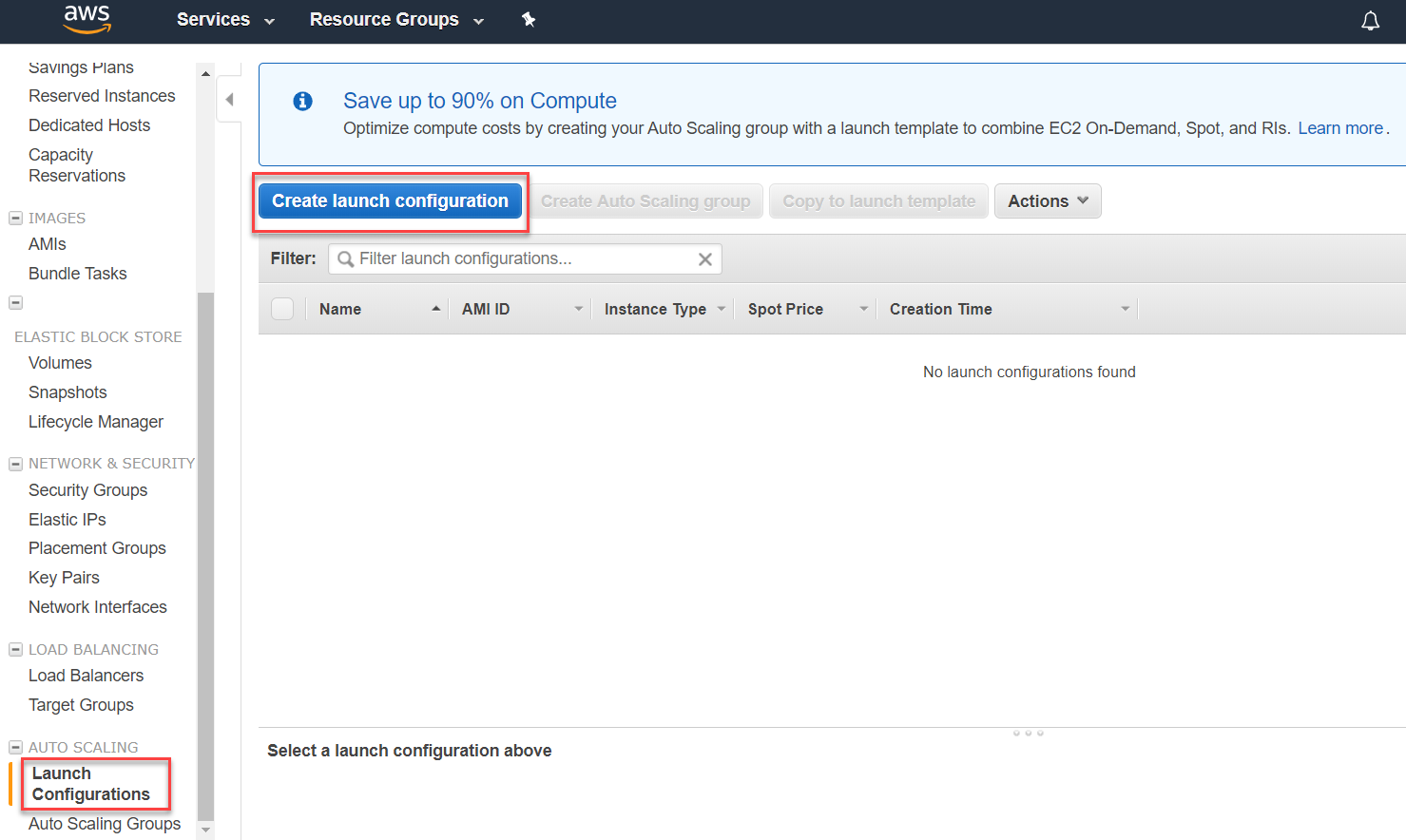
The first thing you do, similar to creating a new EC2 instance, is to select an AWS Machine Image or AMI.

Next, you select the Instance type. This defines your vCPUs and Memory for the underlying EC2 instance (that will be built using these configurations).
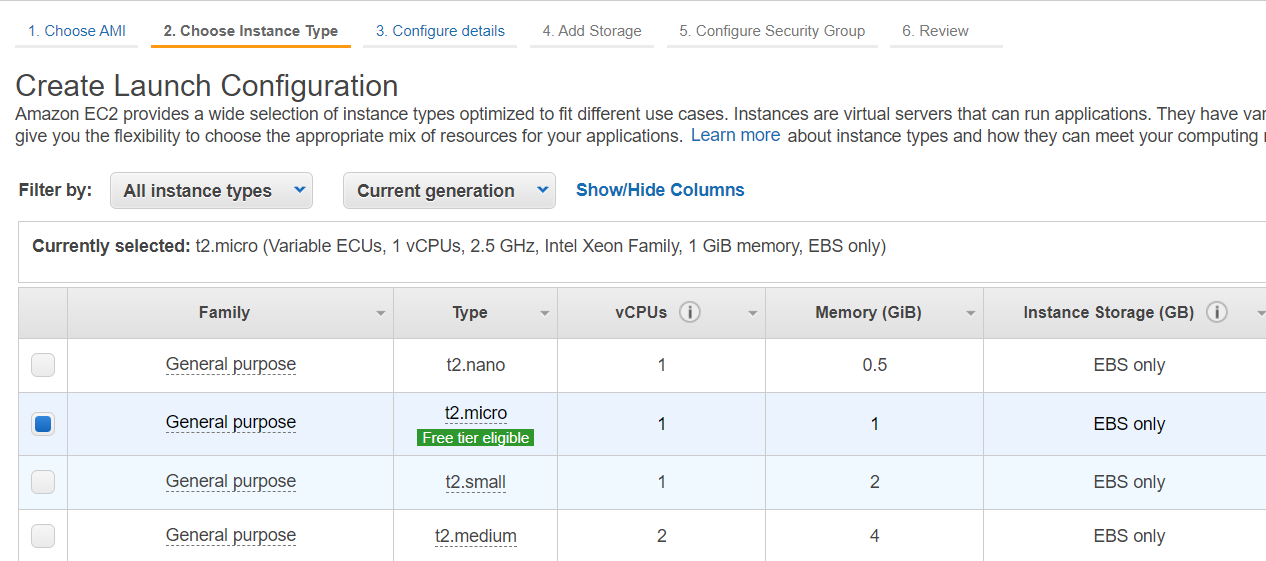
Next, you provide a name for your launch configurations. You can also configure to use Spot instances here to save on cost (for any non-critical workloads). You can also configure CloudWatch detailed monitoring.
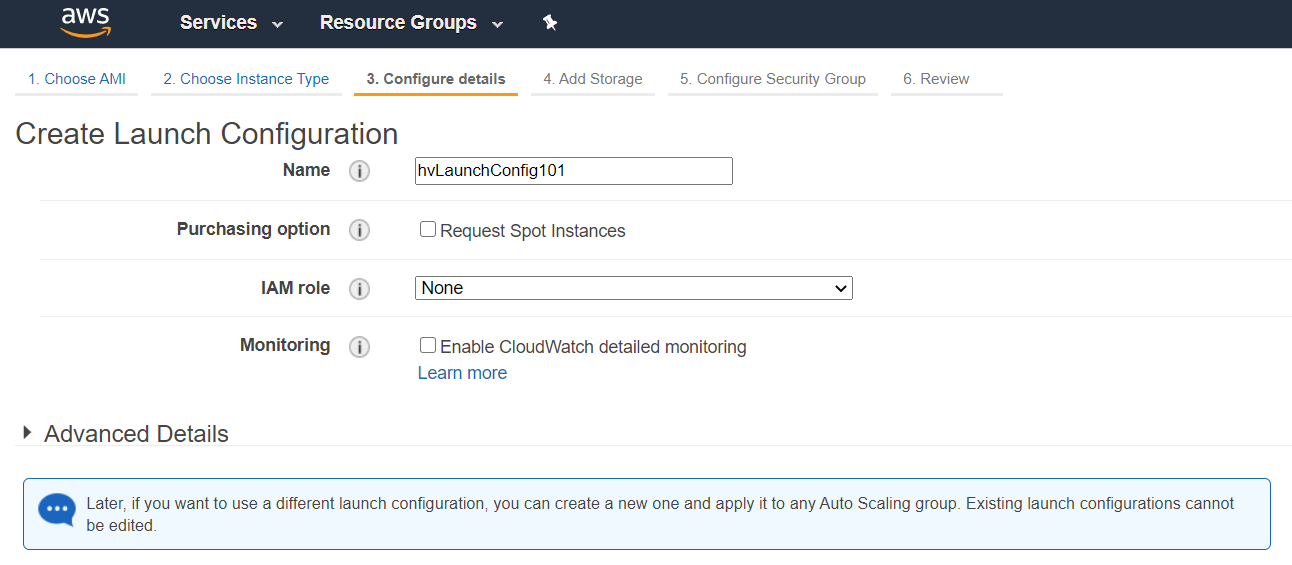
Next up are the Storage settings. You update the settings for the OS disk and add more volumes if you need.

Next, you provide the security group configurations. You can create a new one or reuse one of the existing ones.

Finally, you review the settings and create your launch configurations.
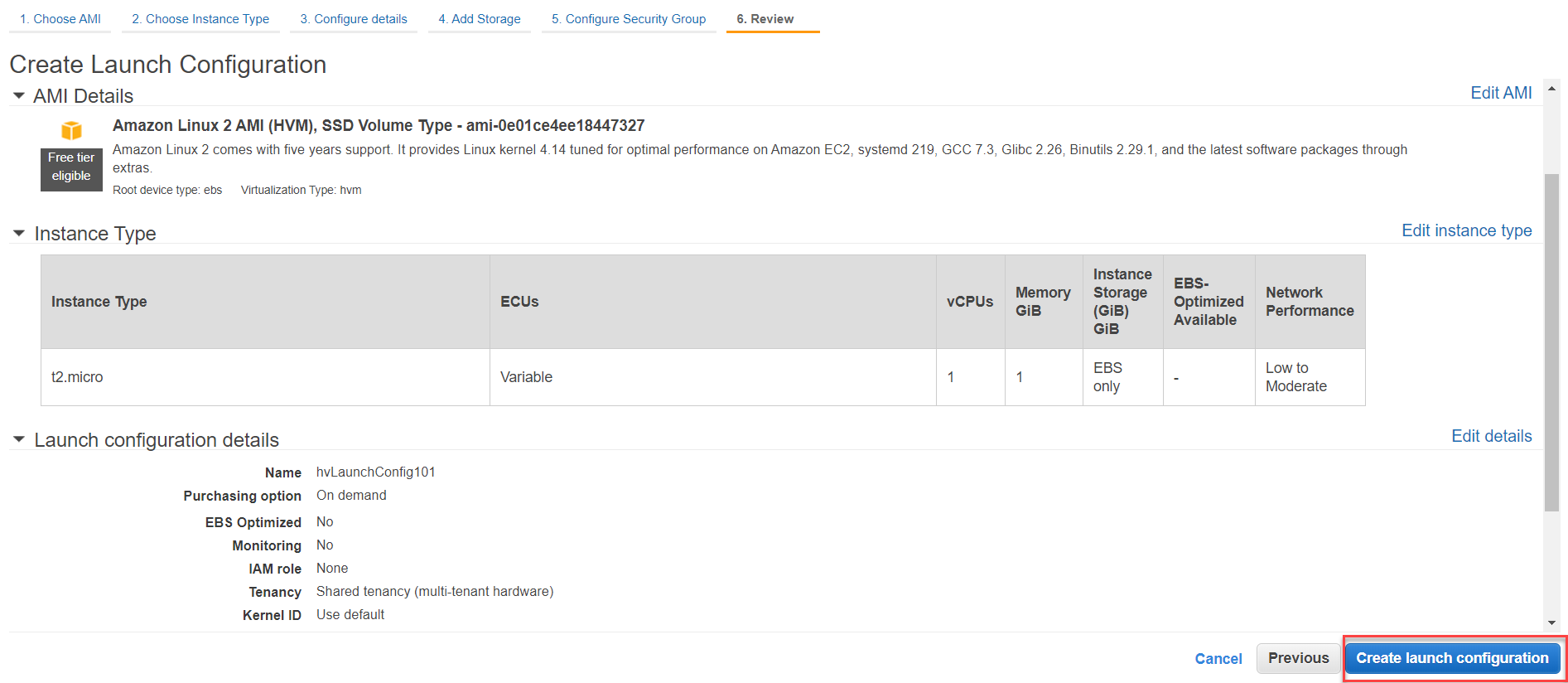
Before the launch configurations can be completed, you are also prompted to provide a key pair to be used to authenticate.
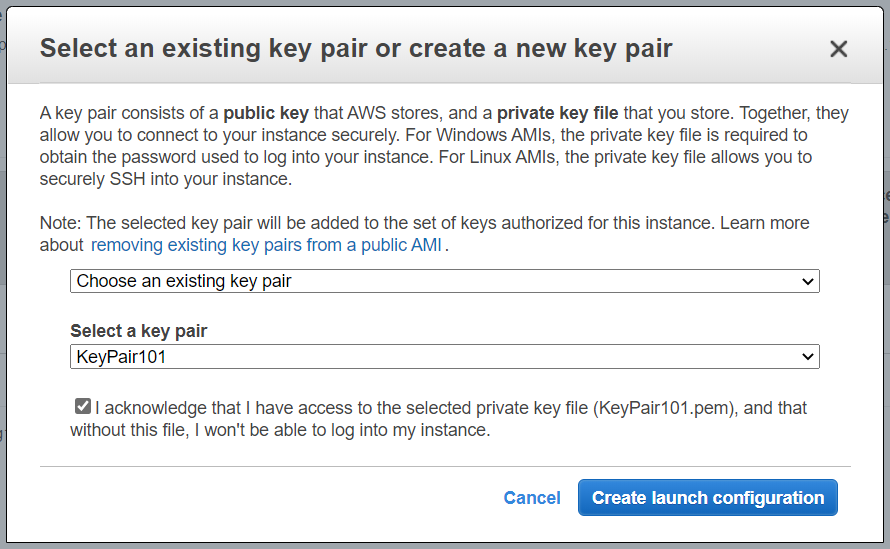
That's it! Now you have a reusable configuration that you can use to build multiple EC2 instances in a predictable fashion.